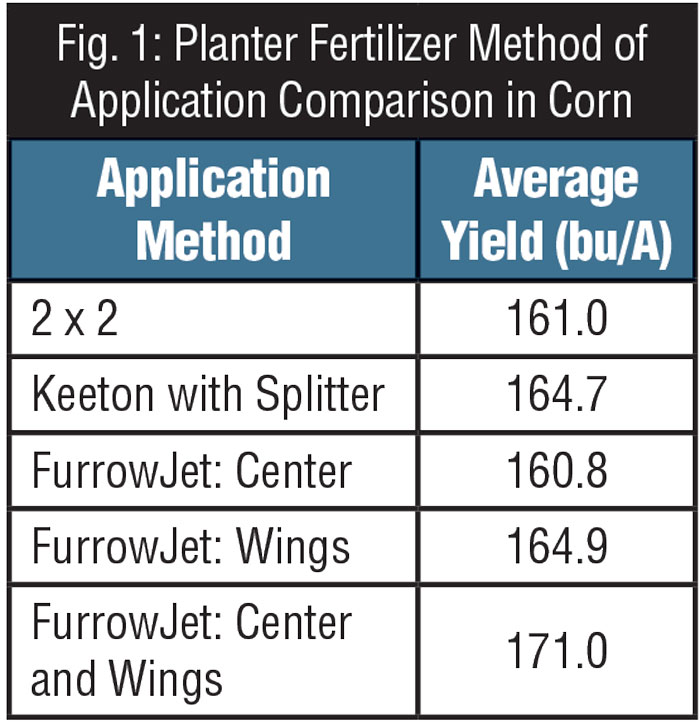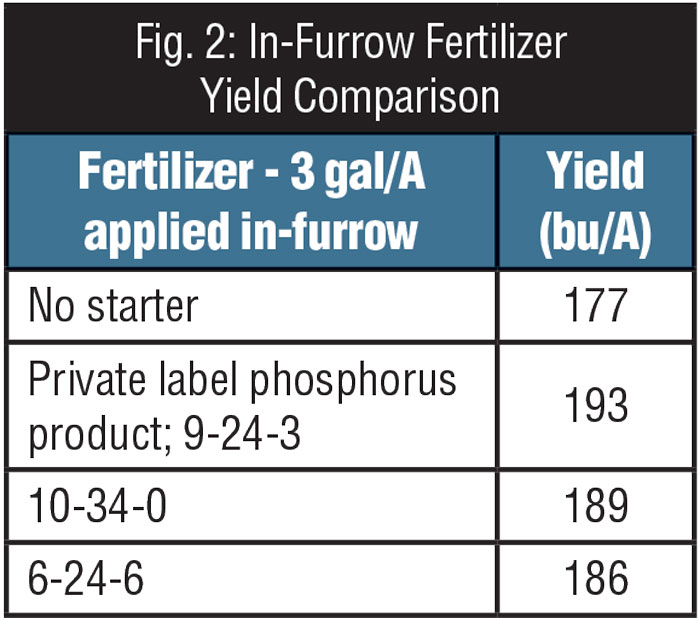Not many years ago, there was only one planter placement choice for fertilizer. That was 2-by-2.
With the adoption of liquid fertilizers came the opportunity to place some of a plant’s fertility needs near the seed. This method allowed for increases in yield as phosphorus (P), potassium (K) and micronutrients were positioned to be more available to the seed and plant root system earlier in the growing season.
A New Era
The last few years have seen many new attachments for planters that allow multiple bands of nutrients to be placed near the seed to feed more of the plant’s root system.
During vegetative growth, the portion of a corn plant that is below ground can be more than the amount above ground. The plant’s root system and its mass are responsible for water and nutrition uptake. This system is responsible for producing the desired increase in yields.
Fertility placement affects the shape of the plant’s root system. Multiple banding of nutrients helps to enlarge the shape of that root system and help the root system contact more soil. By feeding the roots in multiple bands, nutrients are more available to a larger number of roots, and those roots will proliferate more in multiple areas. Nutrient load (in ppm) in a single band can be quite high, but placing the load in smaller portions in multiple locations will lower the ppm and still allow for efficient availability of the nutrients.
AgroLiquid’s North Central Research Station (NCRS) has conducted multi-year tests to evaluate different placement options available to growers. The Precision Planting FurrowJet gave the highest yield when all three positions of placement were used (see fig. 1).
Considerations for Starter Fertilizers
Planter fertilizer opportunities have been investigated routinely at AgroLiquid’s NCRS since 1994. Based on that research, AgroLiquid has identified the following considerations when deciding whether starter fertilizers are the right choice for your farm:
1. Choose your starter.
There is not a “one size fits all” approach to starters. Some fertilizers are commodity types that are commonly available, like 10-34-0, but can vary in price and quality. Others are private label, made by a company that promotes high quality and unique characteristics. These are often higher in price per gallon, but the price can be offset by lower use rates, higher yield, cleanliness, ease of handling and more.
An experiment at NCRS compared 3 gallon-per-acre rates of several in-furrow fertilizers and found the yields indicated in fig. 2.
2. Make the correct diagnosis and take a complete soil test.
If you are going to fertilize for a specific nutrient shortage, make sure it’s the right one. A few years ago, I visited a field that was showing sulfur deficiency symptoms, even though ample sulfur had been applied in the form of spring broadcast ammonium sulfate and a liquid in-furrow sulfur fertilizer.
When I got there, the field was indeed showing yellowing, which was thought to be from sulfur deficiency. Upon investigating, I discovered the soil test did not include micronutrients. New soil and tissue samples were pulled, and the analysis indicated a severe manganese deficiency. This was the cause of the yellow corn. The pre-season misdiagnosis was costly in two ways: Extra fertilizer money was spent for something that wasn’t needed, and there was a yield loss from not putting on the correct nutrient.
3. Take advantage of in-furrow placement for more than just N-P-K.
At NCRS, we have shown that a starter fertilizer shouldn’t be expected to work without needed micronutrients. You can certainly broadcast some micros, but take advantage of in-furrow placement for micronutrient application when possible. They are usually applied at low rates, so place them where you are sure to get the most uptake — with the seed. There are a number of micronutrient sources for in-furrow, and some are better than others.
The North Central Research Station will continue to explore yield potential from multiple band placements as we focus on crop nutrient placement, timings, rates and sources for efficient and economical management practices that keep nutrients in the field and feeding our crops.









